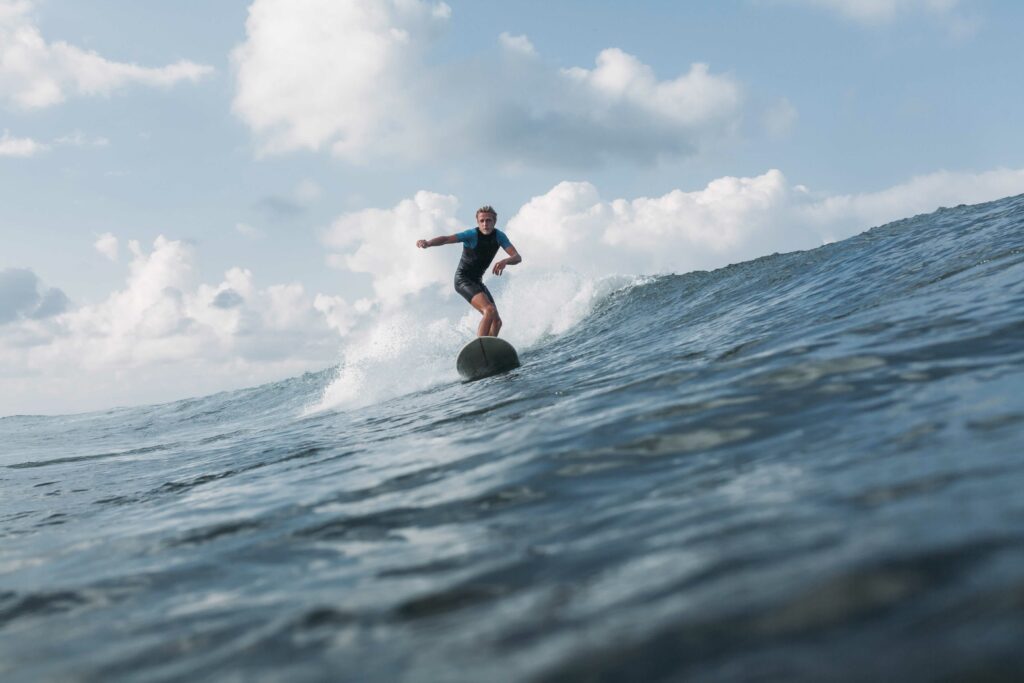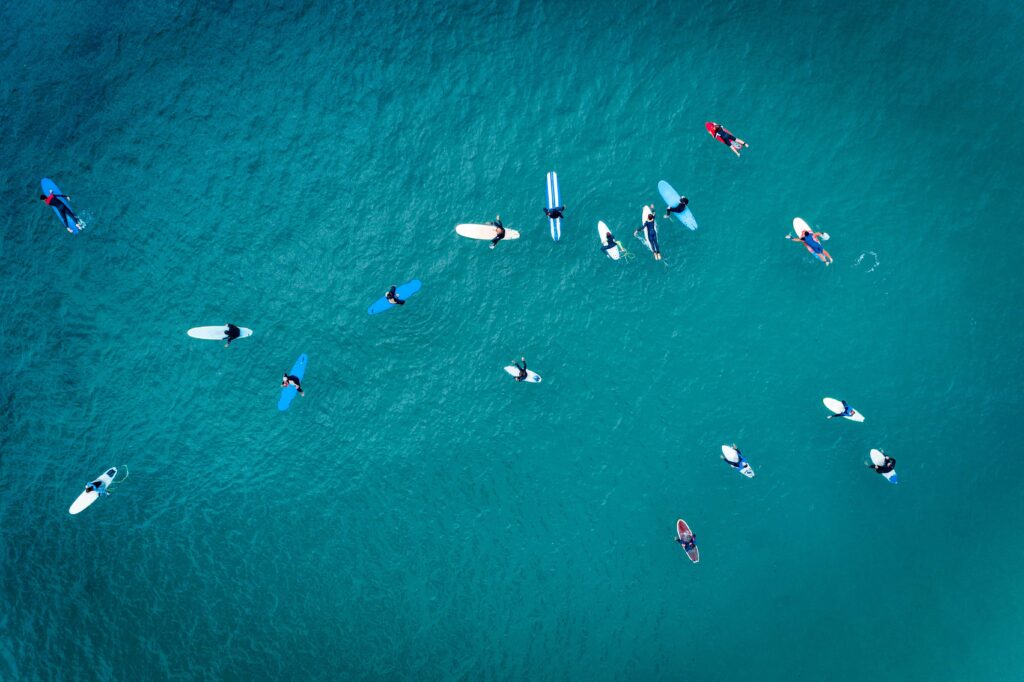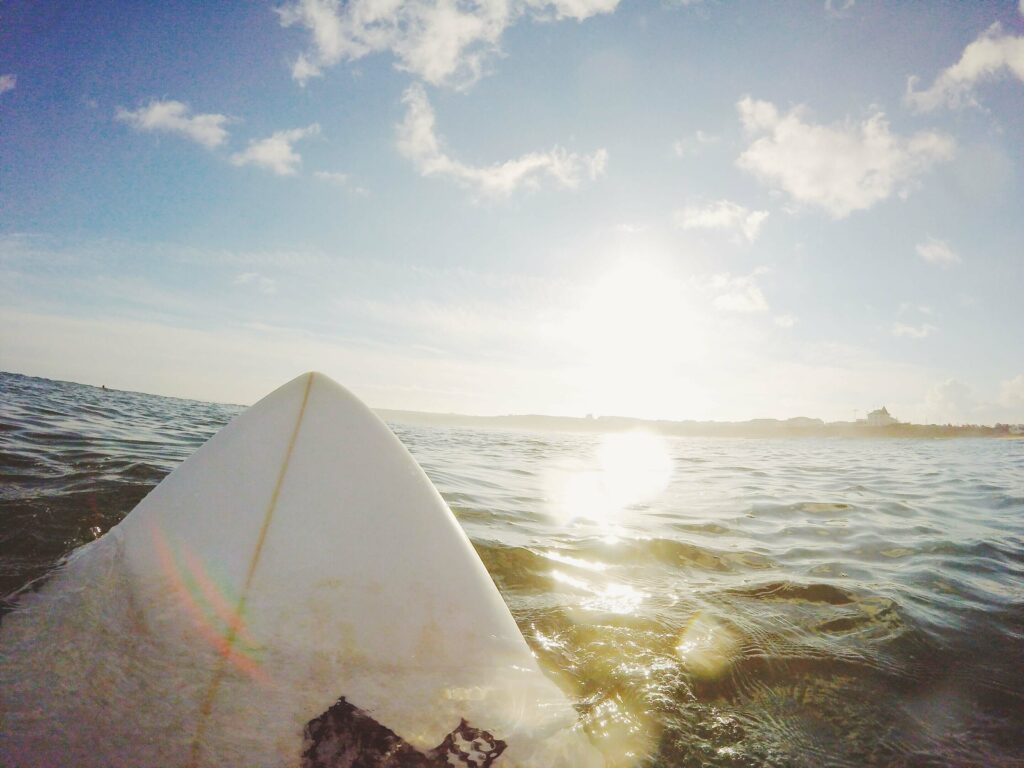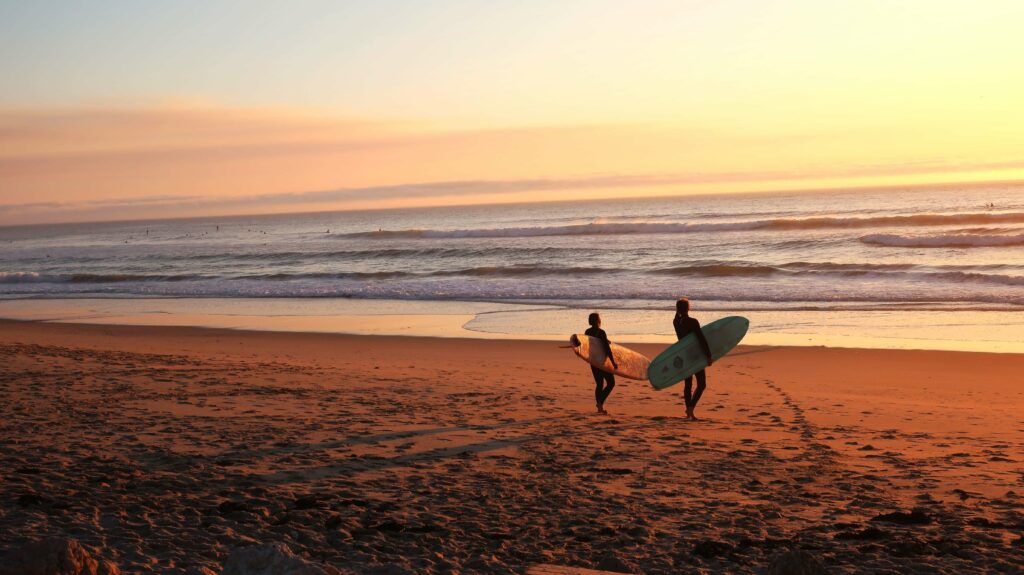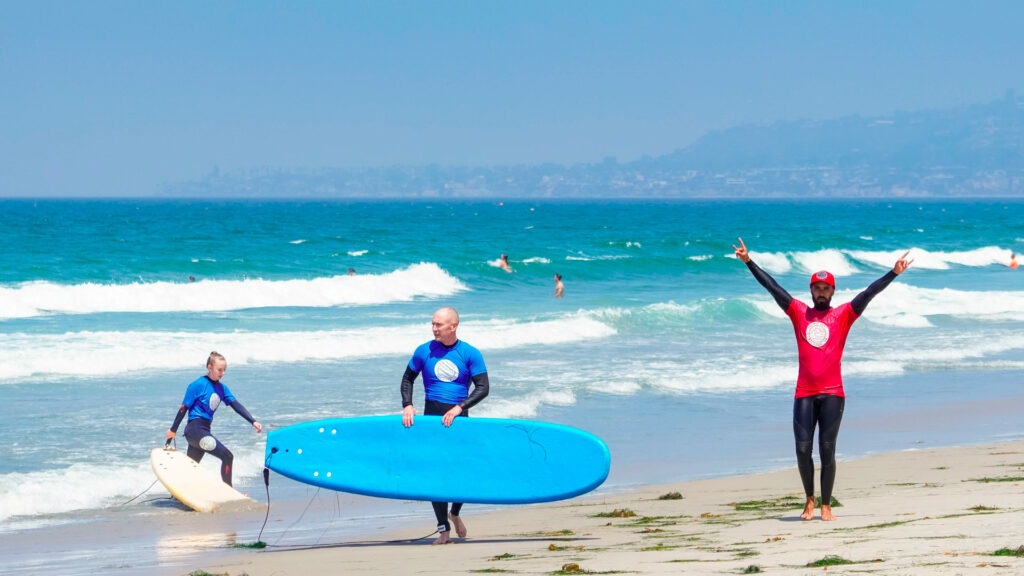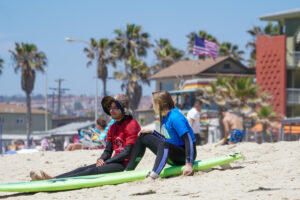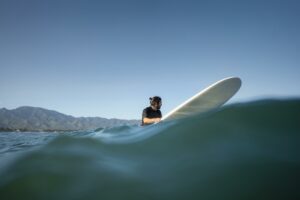What You Need to Know Before You Start Surfing
Surfing originated in Hawaii in the 18th century and has since become a popular sport worldwide. It is a thrilling and exhilarating sport that allows you to connect with nature, get exercise, and have fun. Not only is it fun, but it also offers numerous health benefits, such as improved cardiovascular health and increased strength and endurance. If you’re a beginner, it can be overwhelming to know where to start. That’s why we’ve put together the ultimate guide to surfing, covering everything from surfing basics to advanced techniques, surfboard maintenance, and surfing culture. Get ready for a lesson on surfing 101!
Surfing 101 – Getting Started
Getting started with surfing can be a daunting task. Fortunately, there is plenty of help available for those who want to learn the basics. Before you hit the beach, it is important to invest in quality surf gear and select the right type of surfboard for your size and skill level. Once you have your equipment ready, practice on dry land by learning proper paddling techniques and understanding wave dynamics. This will help you develop an awareness of ocean safety and give you confidence when it’s time to get in the water. You should also familiarize yourself with surf etiquette and always be respectful of other surfers in the area. Finally, remember to take it slow and enjoy the journey as you progress in your abilities as a surfer. With a little bit of patience and dedication, you will soon find yourself riding waves like a pro!
Choosing the Right Gear for Surfing
Choosing the right gear for surfing is essential to a successful and safe water experience. When selecting surfboards, it is important to consider your size and skill level. Beginners should start with a longboard, which offers increased stability and buoyancy in the water. As you progress, shortboards provide more maneuverability and are ideal for experienced surfers.
In addition to surfboards, it’s also important to purchase quality wetsuits and booties that will keep you warm in cold or choppy waters. Other necessary items include a leash to attach your board to your ankle, wax for traction on the board, ear plugs, and sunscreen. With the right gear in hand, you’ll be ready to hit the waves like a pro!
Choosing an Appropriate Surfboard
When it comes to surfing, having the right board can make all the difference in your experience. Choosing an appropriate surfboard can be a daunting task, especially for beginners as there are so many options to choose from. Longboards are the best option for beginners, as they are more stable and buoyant in the water. As your skill level increases, you may opt for a shortboard to gain more maneuverability.
It’s also important to consider your size when selecting a board; if you’re on the taller side, a longboard will be better suited to your frame. Additionally, it is recommended that you find a local surf shop to get advice from experts about the right board for you. With their help, along with trial and error in the water, you’ll be able to find the perfect board that suits your needs!
Choosing the Right Surf Spot
Choosing the right surf spot is essential for a safe and enjoyable surfing experience. Before beginning, it’s important to consider the conditions of the water, such as wave height and shape, wind speed and direction, tide movement, and swell direction. Be sure to avoid any spots with strong undercurrents or other hazardous conditions. Additionally, look for an area that has plenty of space between yourself and other surfers in order to minimize potential collision risks.
Surfing Etiquette
Surfing etiquette is an important part of the surfing experience and serves to keep everyone safe and happy in the water. The most basic rule of etiquette is to always respect other surfers, both in terms of their space and their wave-riding rights. This means avoiding cutting someone off or dropping in on another surfer’s wave, as well as leaving plenty of room when paddling out or positioning yourself for a wave.
Additionally, be sure to be mindful of your surroundings and take care not to disturb any wildlife or marine life while you’re out in the ocean. And lastly, always remember that safety comes first – if conditions look too dangerous or you’re feeling unsure, it’s best to stay out of the water until you can assess the situation better. With these simple guidelines in mind, everyone can enjoy a safe and fun surfing experience!
Surfing 101 – Learning the Basics of Surfing
Learning the basics of surfing is a great way to get started in this exciting and rewarding sport. Whether you’re a beginner or an experienced surfer, mastering the fundamentals can help ensure that your time in the water is both safe and enjoyable. With patience, practice, and perseverance, anyone can master these fundamental skills – but most importantly– remember to have fun!
Paddling & Standing Up
Paddling and standing up on a surfboard are two of the most important skills for any surfer to master. Paddling is the motion used to get yourself out into the waves and position yourself for a ride. It should be done with both arms in a synchronized motion, using your core muscles for power.
When you start feeling the wave, begin popping up onto your board with both hands gripping firmly onto either side of the board’s deck. Keep your feet shoulder-width apart and balanced, as this will give you a more stable foundation while riding. It is also important to keep your eyes focused on the horizon line; this will help you maintain balance and control while surfing.
Riding Waves & Turning
Riding a wave and turning on your surfboard is the greatest reward for any surfer. To start, you need to find your balance point on the board so that you can easily flow from side to side with minimal effort. Once you’re comfortable, you can begin to edge your board up and down the waves.
When turning, make sure that you keep your weight centered and lean into the turn while keeping your arms extended as far as possible. This will help keep speed and control throughout the maneuver. As you gain momentum, use subtle changes in body position to adjust your direction; press down on one rail to turn left and press down on the other rail to turn right.
Duck Diving
Duck diving is a vital skill for surfers that is used to safely pass beneath waves while paddling out. It allows the surfer to move quickly and efficiently, avoiding the force of the wave above them. To duck dive, start by positioning your board on the surface of the water with both hands on either side of the nose. Lean forward onto your board and use your arms to push down and below the surface of the water. The key is to keep as much air in your body as possible so that you can stay buoyant and glide beneath the wave with minimal effort.
Surfboard Maintenance
Surfboard maintenance is an essential part of any surfer’s routine. It can help to extend the life of your board and keep it performing at its best. Here are some tips for keeping your board in tip-top shape:
Cleaning
After each session, make sure to use fresh water and a soft cloth or sponge to wipe off any salt, sand, and dirt. This will help prevent corrosion and discoloration over time. Additionally, check for any small cuts or scratches that may have occurred during a previous session and repair them if necessary.
For deeper cleaning, you can use a mild soap solution on your board but make sure to rinse it thoroughly afterwards. If there are stubborn stains or scuffs, you can also try using rubbing alcohol as a spot cleaner. Make sure that all cleaning products are designed specifically for surfboards and never use abrasive materials or harsh chemicals such as bleach as these could damage the material of your board.
Regularly cleaning your board will not only keep it looking good but also help to extend its life span so you can get the most out of every session in the waves!
Waxing
Waxing your surfboard is an important part of the maintenance process and it can make a huge difference to your overall performance. Applying a fresh layer of wax before each session will help improve grip, reduce slipping, and even provide some extra cushioning against the impacts of bigger waves.
The best way to apply wax is to start with a clean board. Make sure you have removed any old wax or dirt from the surface using a soft cloth or brush. Once the board is clean, warm up the wax in your hands first before rubbing it onto your board in circular motions until you have covered the entire surface evenly. You can also use a wax comb to remove excess and create grooves for improved traction if desired.
When finished, allow time for the wax to set before going out into the water. Waxing regularly will help keep your board in top condition and give you the confidence to tackle whatever conditions come your way!
Repairs
When it comes to repairs, we recommend starting by inspecting your board for any cracks or dings. If damage is found, use a ding repair kit to patch up the area and prevent water from entering the board. You’ll need to sand down the area before applying resin, allowing it to dry thoroughly before moving on.
If your fins are damaged or loose, simply unscrew them from the base of the board and replace them with a new set. To avoid damage during travel and storage, consider investing in a protective bag or cover for your surfboard.
Regularly repairing any damages will ensure that your surfboard stands up against whatever conditions come its way – making sure you’re always ready for the next wave!
Learn How To Surf With Pacific Surf
Now that you have read the ultimate guide to surfing, it’s time for you to hit the waves! Learning to surf can be an incredibly rewarding experience and Pacific Surf is here to help! Pacific Surf School is your premier destination for an unforgettable surfing experience. We offer surf lessons for all levels of ability, from the beginner looking to take their first steps in the water, to those seeking to refine their skills. Our experienced instructors will guide you through each step of the way, providing personalized feedback and tips that will help you progress quickly.
Our team of professional instructors offers private, semi-private, and group surf lessons. We operate throughout multiple picturesque locations along the West Coast, including San Diego, Pacific Beach, Santa Monica, Huntington Beach, Mission Beach, Manhattan Beach, Santa Cruz, La Jolla, Los Angeles, and more.
Whether you are a beginner or an experienced surfer, we have the perfect lesson to suit your needs. So why wait? Book your surfing lesson today with Pacific Surf School and discover the thrill of riding the waves in some of the most beautiful locations in the world. Contact us now to make your reservation and take the first step towards an unforgettable surfing adventure!
FAQs
Becoming good at surfing can take anywhere from a few months to several years, depending on a variety of factors such as frequency of practice, natural ability, and quality of instruction. Consistent practice and dedication are key to improving your skills and becoming a proficient surfer.
There are many surfing terms and slang used in the surfing community. Here are a few common ones:
Barreling: When a wave creates a hollow tube that a surfer can ride inside
“He rode the wave perfectly, disappearing into the barreling tube and emerging seconds later with a huge smile on his face.”
Break: The point where a wave begins to break and form white water
“The waves were small and not breaking very well, so we decided to move to a different break.”
Carve: A turn made by a surfer on the face of a wave
“She executed a beautiful carve on the wave, carving a smooth arc into the water.”
Grom/Grommet: A young or inexperienced surfer
“The groms were having a blast catching the small waves close to shore.”
Hang ten: A classic longboarding maneuver where a surfer walks to the front of the board and hangs all ten toes off the nose
“The longboarder showed off his skills by hanging ten at the tip of the board for several seconds.”
Point break: A type of wave that breaks along a point of land or rocks
“We hiked along the coast until we reached a beautiful point break with perfect waves.”
Wipeout: When a surfer falls off their board during a wave ride
“He took a steep drop and then wiped out spectacularly, tumbling in the crashing waves.”
Weather and tides can greatly affect surfing conditions. Wind direction and speed can create choppy or glassy water conditions, while swells and wave height can be influenced by storms and pressure systems. Tides can affect the size and shape of waves, with some breaks being better at high tide while others may be better at low tide. It’s important for surfers to pay attention to weather and tide forecasts before heading out to surf.
Proper attire is important for comfort, protection, and performance while surfing. Most surfers wear a wetsuit to keep warm and protect against scrapes and cuts from the board and ocean floor. The thickness of the wetsuit depends on the water temperature and personal preference. A rash guard can also be worn underneath the wetsuit for added warmth and protection. Surf wax is applied to the board for grip and traction, and surf booties may be worn in colder water or rocky areas for foot protection. Sunscreen, a hat, and sunglasses can also be worn for sun protection.


